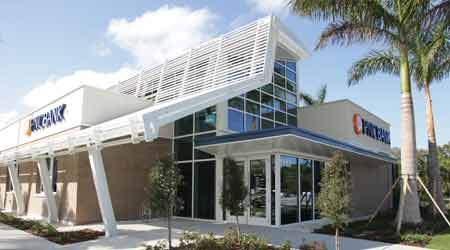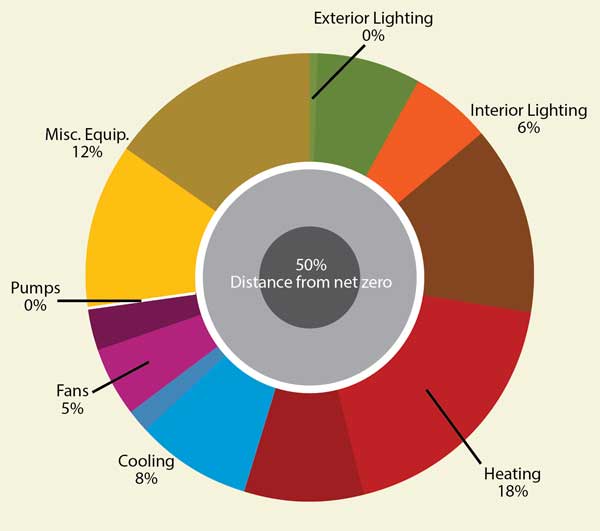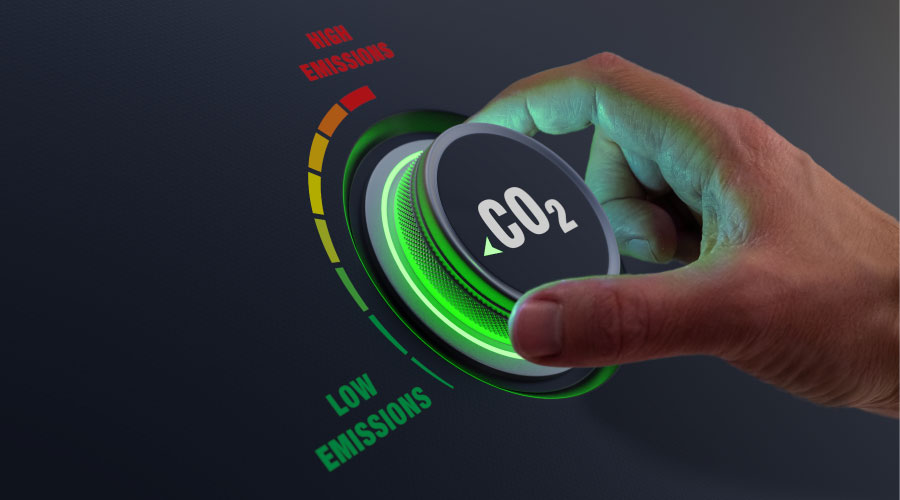 The Brando Resort achieved near net zero energy by designing systems that consume no more energy or water than they produce or that can be locally harvested.Paladino and Co.
The Brando Resort achieved near net zero energy by designing systems that consume no more energy or water than they produce or that can be locally harvested.Paladino and Co. 3 Steps To Net Zero Energy Operations
On the path to net zero energy, here is how to find opportunities for energy efficiency, and turn them into capital to reinvest.
Operating a net zero energy building essentially means that the building produces as much energy as it uses on an annual basis. The obvious challenge with net zero energy is that you have to produce enough energy to achieve net zero, and solar panels, fuel cells, wind turbines, etc., require significant capital to procure.
The rotten truth about a net zero energy goal is that you can buy your way to it. Simply find a big bag of money and use it to buy solar panels to cover every square inch of your building. By adding a massive amount of power, even the most inefficient buildings can achieve net zero.
And who has extra money lying around to pay for renewable energy systems? The answer: everyone.
Just about every building wastes energy in some form or another. And wasted energy represents the capital needed to get to net zero energy. Every watt of energy saved through controls, occupant behavior changes, and upgrades is one less watt that needs to be generated on-site. So you can accrue capital you need to procure renewable energy systems by saving energy first, and by doing so you will avoid additional costs of buying a larger renewable energy systems that cover your waste.
To start the journey to net zero energy, the first step is to eliminate energy waste. The savings you accrue over time can be reinvested in your building to achieve the next wave of energy efficiency. And when you have eliminated all the waste, then your building is truly ready for net zero.
Here are the steps that you can take today, without that magic bag of money:
1. Find and fix your wasted energy
• Conduct an ASHRAE Level II or III audit. This will provide you with energy conservation measures that span from no-/low-cost and that have an immediate payback, to more substantial upgrades that may take multiple years to return the investment.
• Implement low- and no-cost measures right now. Every building can tolerate adjustments to HVAC, lighting, and ventilation schedules so they run only when needed. Changes in setpoints, time of use, occupant preferences, and other simple optimization measures often pay for the audit in the first or second year of the change.
• Consider how occupants are part of the equation. Are you keeping the building cooler/warmer due to a few complaints? Are occupants plugging in equipment they don’t really need? Do occupants understand how their behavior is driving building energy use? Don’t be afraid to ask these questions to uncover the lowest cost options to save energy.
• Doggedly take advantage of every single opportunity to reduce — and eventually eliminate — wasted energy. Roadblocks to implementation change year-to-year; don’t hesitate to reconsider an idea that did not pan out the year before to see if barriers have been removed. Perceptions are rapidly changing; be prepared to take advantage of those shifts.

(Caption: PNC Financial Services Group established its first net zero energy branch in Fort Lauderdale. Credit: Paladino and Co.)
2. Use the savings to pay for improvements
• In the coming years, keep your budget for utilities consistent from year 1, but escalate it annually to keep up with the rising cost of energy. That way, when you realize savings from these incremental efficiencies, those savings become your budget to reinvest in the building year-on-year.
• If you run out of efficiency options, there are clues to know if you have truly identified all of the possible wasted energy in your building. Simply look up your building type within the Commercial Buildings Energy Consumption Survey (CBECS) administered by the U.S. Energy Information Administration (EIA). If you are saving at least 50 percent more energy than the average building in your survey, chances are that it’s time to invest in renewables instead of looking for further upgrades.
• Calculate the total cost per kWh for solar panels. This will be the baseline against which to compare every energy efficiency measure you identify. Any energy conservation measure that has a lower cost per kWh saved should be implemented before investing in solar panels.
• Each time you incur enough budget to implement the next energy efficiency measure, recalculate your budget on the cost per watt of renewable energy. The market is rapidly evolving, and the costs for renewable energy are constantly going down.
3. When you reach the sweet spot where the cost of renewable energy is less than the cost of the next building upgrade (see “ECM selection roadmap” below), then and only then, is the right time to invest in power production through on-site renewables
• Once you begin to invest in renewables, keep your eye on your efficiency gains and your property’s performance. Before investing in the next phase or renewables, be sure that waste has not crept back into the building.
• It takes focus and ruthless implementation to achieve a net zero property; use your journey to track best practices. The more focus you bring to operational excellence, the quicker you will achieve your net zero goal.
• Share your lessons learned and engage in industry groups. Technologies, best practices, occupant behavior trends, and government incentives are always evolving. By staying current, you can identify alternate paths which may get you to your net zero destination quicker.
For some owners, the net zero energy goal could be achieved in five to 10 years. For others, the path may take longer. Regardless of the time frame, these steps will work on any building and for any owner or operations team that is 100 percent committed to a net zero energy goal.
Brad Pease, vice president, Paladino and Company, is a LEED Fellow. He helps optimize various sustainable strategies and high-performance systems organized around the triple bottom line. Pease worked on The Tower at PNC Plaza, the greenest high-rise office tower in the world, which recently achieved LEED Platinum certification. Pease can be reached at bradp@paladinoandco.com.
Email comments to edward.sullivan@tradepress.com.
ECM SELECTION ROADMAP

Caption: An energy audit can identify how much energy is being used and where. It can also offer clues on where to find savings from energy conservation measures (ECMs). This chart shows a building that is at the sweet spot: The owner has saved substantial energy in exterior and interior end uses, including some measures to reduce heating and cooling energy use, and has driven plug loads down (“Misc. equipment” on the chart). The chart shows past and present energy use, with the latter shown in brighter colors. Heating and cooling loads should be targeted next to find more savings because heating and cooling systems typically require substantial investment. So a comparison of options against the cost per kWh of renewable energy should be considered before making an investment. In this case, the cost of renewable energy is less than the cost of upgrades, so it’s time to buy renewables to achieve the remaining 50 percent of energy to achieve a net zero goal.
Related Topics:














